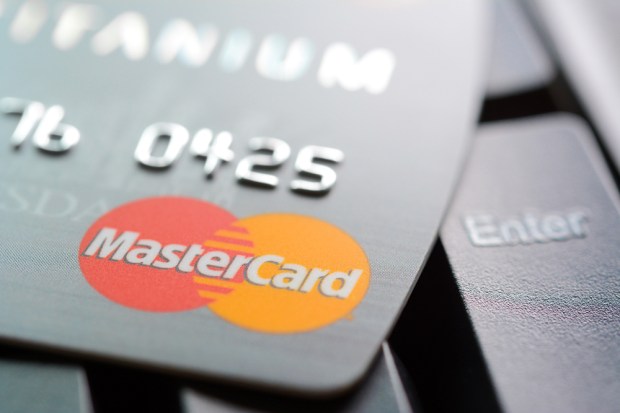Credit, On A Cardholder’s (Flexible) Terms

Mastercard is rolling out a new program that gives cardholders another option for financing their purchases, leveraging their existing credit, debit and commercial cards: installment payments. In an age where cardholder choice means making a sale or not, flexibility and control are key, Juan Pablo Vivas, SVP and head of global credit at Mastercard, tells Karen Webster. (Not to mention providing a new revenue opportunity for banks.)
As the world of commerce (electronic and otherwise) skews ever toward giving power to the cardholder — with sway over where to buy, how to pay and how to get what you paid for — there are now huge shifts occurring in just how long it takes to pay.
Consider installment credit.
First impressions of hearing the word installments may make you think of a layaway plan or paying for big-ticket items over years and decades (think a car or house) through fixed credit loans, but Mastercard’s solution enables credit, debit and commercial issuers to offer an alternative payment plan to cardholders for agreed-upon purchases. This will provide cardholders flexibility and choice when purchasing items such as handbags, vacations or washing machines, which aren’t as big-ticket as a car or house but are areas where cardholders desire more flexible and controlled repayment options.
Mastercard has just linked with BRD-Groupe Société Générale, through which the pair has debuted a new payment plan option that gives cardholders that choice — in the case of BRD, with no attendant interest rates and payment options stretching across a 36-month timeframe. First available in Romania, this new program will become more widely available across Europe through 2017.
In an interview with Karen Webster, Juan Pablo Vivas, SVP and head of global credit at the payments giant, said the operative word is “control,” enabling cardholders to buy what they want, when they want and affect that choice at the point of sale (POS). This “new, simple, convenient, flexible way of paying with a credit card or borrowing money” offers flexibility on a purchase-by-purchase basis, regardless of whether the purchase is made in a store or online.
Consumers will see a prompt for “Installment” when their card is presented at the terminal. The terminal will also show different payment options, said Vivas, with terms stretching across several months. The payment plan parameters, such as length, fees, interest rate, etc., are up to the issuer to decide. While the cardholder may notice only the prompts, the issuers authorize the transaction as they normally would.
The new payment option, he continued, also provides a system with flexibility and control, dictated by the cardholder on their preferred terms: Cardholders will know how much and by when they will pay in a transparent way. Payment decisions and payment horizons can be made before the payment is made, in-store at the POS, online and even after the transaction is completed, a separate solution.
Installment credit features take the notion of credit and enhance it to provide cardholders added control and choice. If the introduction of charge and credit cards was an innovation for the cardholder decades ago (as far back as the late 1950s), Vivas said that the Mastercard installment solution takes that innovation a step further. Now, with the same card, the purchaser can opt to decide to pay off a particular purchase over time with set monthly payments or treat it like any other purchase made to the card (that’s subject to the standard terms of the card). The purchase, like all other purchases made to the card, leverages the existing line of credit on the card, which will be freed up as the cardholder repays.
The process behind the scenes, according to Vivas, is less complicated than it would otherwise appear since Mastercard Installments leverage existing infrastructure and the existing Mastercard card. Enabling Installments means activating two related and modular work streams: an authorization module, if the issuer wants to offer choice at checkout (POS or online), and a calculation and posting solution, enabling choice before and after checkout and creating the necessary data to be printed on cardholder statements. Minimal changes are needed at the acquirer level and at the actual POS, said Vivas.
“I would say it’s simple, because, at the end of the day, there’s no need for a new card to be issued or a new product to be launched,” Vivas said. “It’s leveraging the existing infrastructure that Mastercard has in Romania and globally and with the same card in place.”
Romania is the first stop along Mastercard’s multi-pronged European rollout, given the huge interest and demand across stakeholders from issuers to merchants to cardholders.
As evidence of those plans, Mastercard announced in the U.K. a partnership with VeriFone (NYSE: PAY) to roll out a new installment pay application at retailers across the U.K.
Built on the open, cloud-based VeriFone Commerce Platform, VeriFone developed a unique merchant app for the Mastercard Installments program that will offer convenient and flexible repayment options to U.K. cardholders at the in-store point-of-sale payment device.
“The beauty of card-based installments,” said Vivas, “is that it adds value to all previous stakeholders on the value chain” of payments, “starting with the retailers, offering them an extra payments flexibility, as well as offering existing customers a new way and different way” to purchase higher-ticket items.
